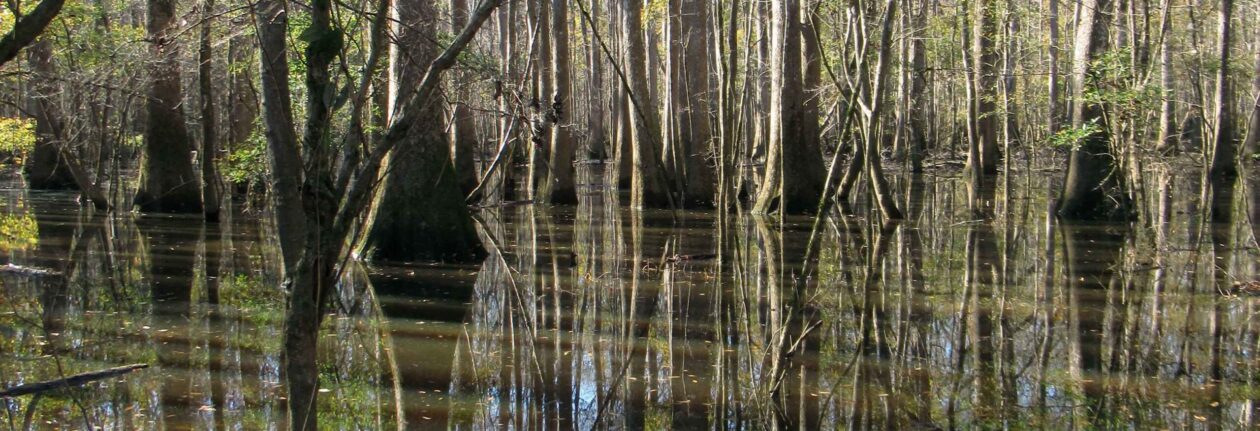Sintra, Portugal
I got out of bed at 07:50 (having laid there awake for some time trying for more sleep), showered, dressed, and got ready. I then left the hostel at 08:35 and walked to the Marques de Pombal Metro Station. I took the metro train to Restauradores Metro Station and walked to the Rossio Railway Station. I made it within two minutes of the Sintra-bound train’s departure, bought my ticket, and rushed on to the train. At 09:01, the train departed and I traveled for roughly forty minutes to the town of Sintra.
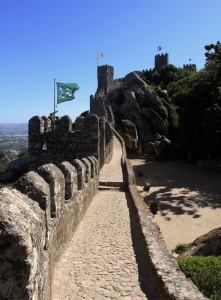
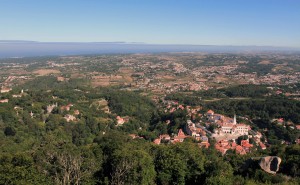
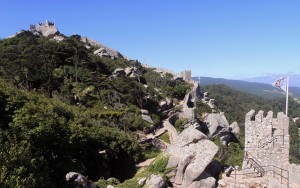
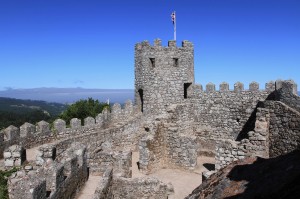
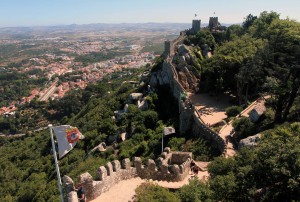
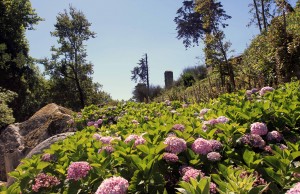
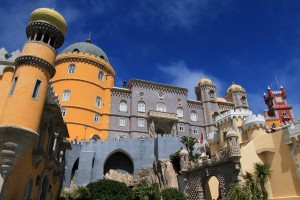
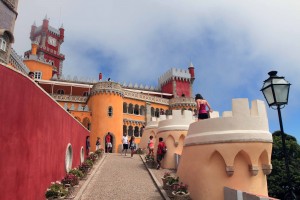
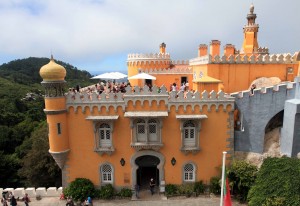
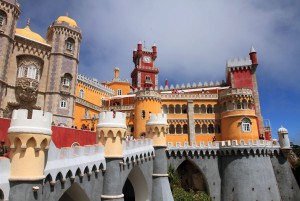
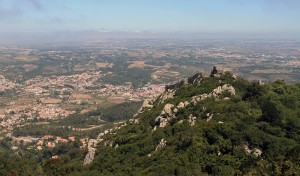
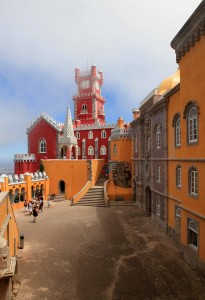
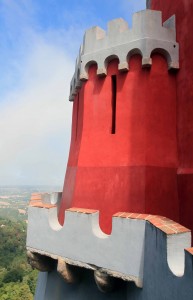
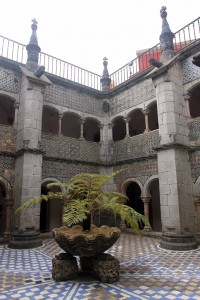
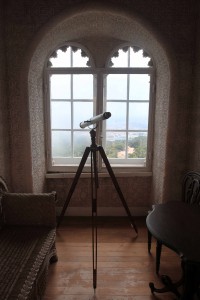
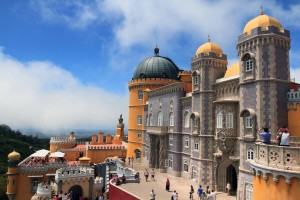
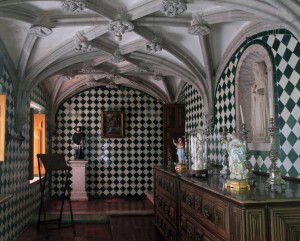
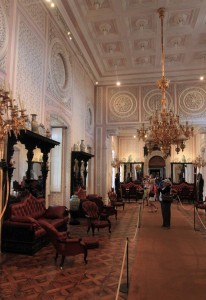
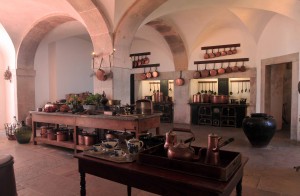
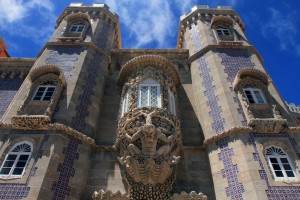
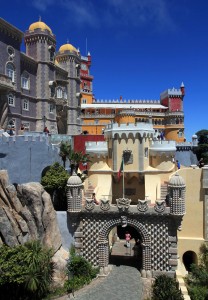
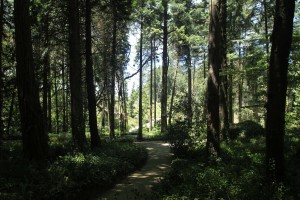
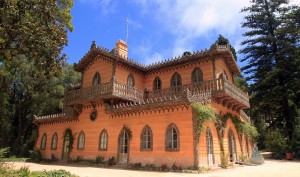
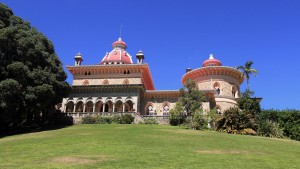
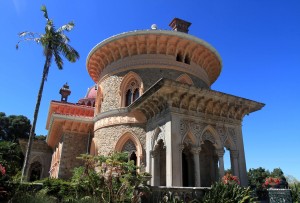
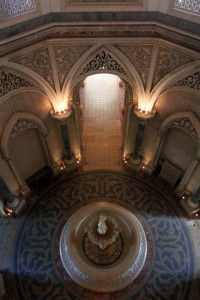
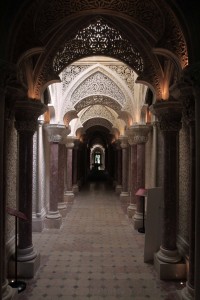
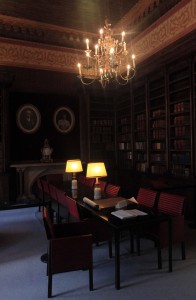
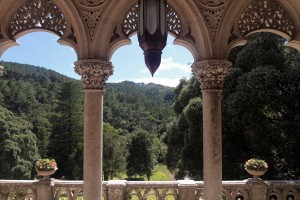
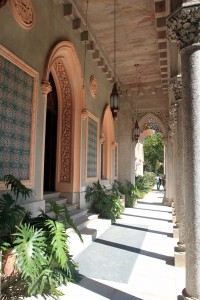
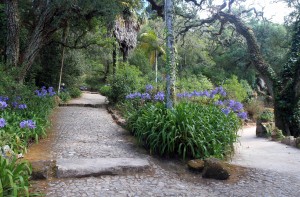
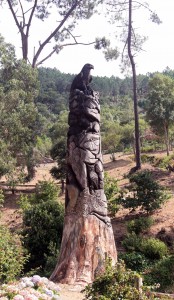
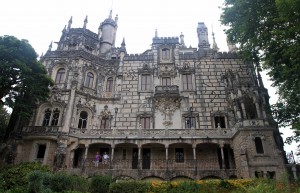
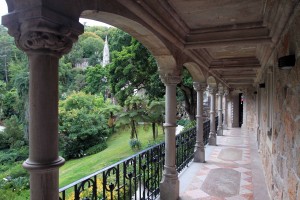
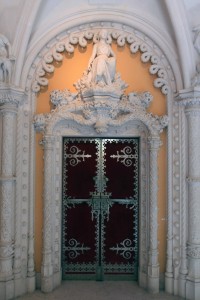
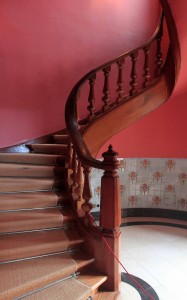
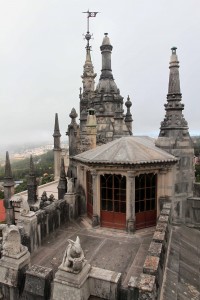
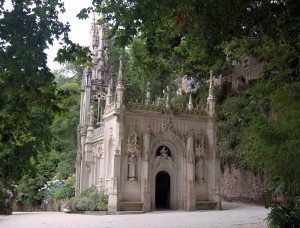
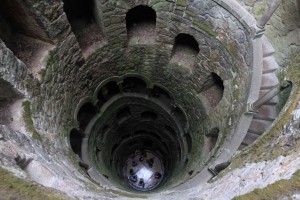
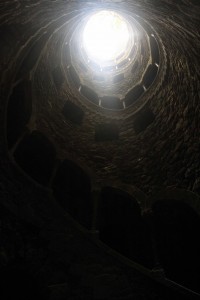
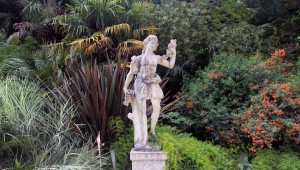
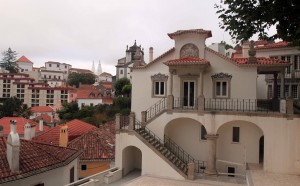
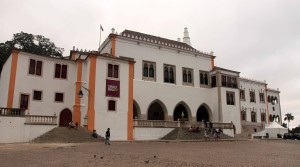
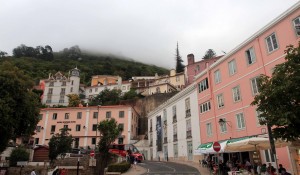
Once at the Sintra Railway Station, I stopped at an ATM for some much needed euros (to my delight, the machine dispensed all ten-euro notes) and then set off toward the Moorish Castle (which could easily be seen from the station since it is built atop the highest mountain in Sintra). I followed some roads, confirmed I was on the right track through the assistance of some other tourists with a better map), and made my way up to the mountain top through some lush green forests. Upon reaching the entrance of the Castle of the Moors, I bought my ticket and set off exploring the walls, towers, and area within. The Castle of the Moors was constructed during the eighth- and ninth-centuries AD during the period of Muslim Iberia; after the conquest of Lisbon (in 1147 AD) by forces loyal to Afonso Henriques, the castle surrendered voluntarily to Christian forces and became an important strategic point during the Reconquista. From the castle, I had a grand view of Sintra and the National Palace within the city, as well as the Atlantic Ocean and Pena Palace, which is located on a nearby mountaintop. I walked along the remaining walls and up each tower to gain batter views. It was a splendid site and I enjoyed exploring the structure. Once I had finished touring the castle, I followed the trails and roads to Pena Palace. At the entrance to Pena Palace, I paid for my entrance ticket and made my way up to the colorful and fairytale-like structure. Pena Palace is built on the site where a chapel and later a monastery once existed; the palace’s structure was inspired by German Romanticist architecture, but was intentionally built with a mixture of eclectic styles that includes the Neo-Gothic, Neo-Manueline, Neo-Islamic, and Neo-Renaissance styles; it was built in nineteenth-century AD by King Ferdinand and was to serve as a summer royal palace. Out of all the palaces and mansions I have seen in my life, I think this may be my favorite; it was truly a beautiful and wonderful sight to behold and I enjoyed touring its premises and the different rooms; it may not be as grand as Versailles or Schönbrunn, but it had a magical air about it and truly looked like something out of Disney film (it certainly inspired the look of several palaces in Disney films). Also, the gardens matched the magical splendor of the palace; though the gardens were not as large as those of the aforementioned palaces, the fact that they exist in a hilly area and that the plants are from all over the world (though dominantly subtropical being in Portugal) made it a special pleasure to walk through (all of Sintra was beautiful, but Pena Palace and its gardens stand out as the jewel of the city and I would highly recommend this part of Portugal for any couples looking for a romantic getaway or memorable honeymoon). After touring the palace, I walked through the gardens and made my way to the two-story Countess of Edla’s cottage, which also looked like something out of a fairy tale. I then wandered through the gardens some more before finally exiting. Next, I made my way along a narrow and dangerous road (wide enough for one and a half automobiles, but used for traffic going both ways and without much room for pedestrians) and walked over two kilometers to the Palace of Monserrate, an exotic palatial villa that was the traditional summer resort of the Portuguese court; it was restored in 1858 AD for Sir Francis Cook, an English baronet created visconde de Monserrate by King Luís. After finally reaching the palace, I entered inside, walked through its gardens, and then walked through the smallish (relative to others) and Moghul-inspired palace. After exploring the palace’s insides, I walked out to the gardens and made my way to the small café on its premises, where I enjoyed a much needed 1.5 liter bottle of ice-cold water and a beer. After that short break, I exited the gardens and made my way along the narrow and dangerous road once more, heading back to Sintra. As I neared Sintra, I stopped at the Quinta da Regaleira Palace, which was another unique palatial residence with many cool buildings, as well as hidden passageways. I paid for my entrance ticket at the gates and set off in the garden, I walked to the chapel, went inside, took a tunnel in the basement that led back outside, and then walked to the main residence. The whole of Quinta da Regaleira was designed by the Italian architect, Luigi Manini, and he designed the different structures that evoked Roman, Gothic, Renaissance, and Manueline styles. I explored the different levels of the main residence (mostly filled with museum displays and therefore not resembling the original interior design in the slightest) and made my way to the rooftop. I then exited the building and continued to explore the gardens. I made my way to Leda’s Cave and then to the Initiation Well, which was deep well with a staircase. I walked down the staircase to the bottom of the well and then walked through one of the dark tunnels to the Waterfall Lake, from there I made my way back to the entrance and eventually exited the premises. Overall, the Quinta da Regaleira Palace was very fun to explore and I enjoyed the design of the whole estate. At this point, it was almost 19:00 and all the palaces would soon be closing down for the day. I walked back to the center of Sintra and made my way to the National Palace, where I took several pictures of its façade (I could not enter inside since the last tickets were sold at 19:00 and the palace would soon shut down at 20:00; although, from what I read online, I didn’t miss much – the other palaces I visited were more worthwhile). I then walked back to the Sintra Railway Station and got on board the 19:35 train to Lisbon Orientale; however, this train was delayed and did not depart until 20:26.
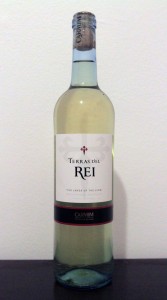
The train made its way east and I arrived at the Lisbon Oriente Railway station at 21:14. Once off the train, I walked to the adjacent bus station and bought a ticket for the next day to Seville (since no trains run from Lisbon to Seville, I was forced to have to resort to using a bus). After procuring my bus ticket, I took the metro train to the Marques de Pombal Metro Station. I then walked back to the hostel and stopped at the restaurant located next to the hostel to get some take-away food for dinner. Once I received my order (a salad with walnuts, pineapple, and cured ham with balsamic vinegar, as well as a pizza with pineapple, asparagus, and mushrooms), I walked upstairs to my single room, had my dinner with a bottle of Portuguese white wine (that was made of Saria, Rabo-de-ovelha, and Antāo Vaz grapes) that tasted of citrus fruits. After eating my dinner and watching some episodes of ‘Comedians in Cars Getting Coffee’, I eventually laid down in bed and went to sleep, sometime around 02:00. This was a long and exhausting day, but well worth it. Sintra was a fantastic place with all of its palaces and I wish I had given myself more time in Portugal to explore the nearby beaches, resort towns, and additional palaces. Truly a magical place and it would make a great week-long getaway for romantic couples.
